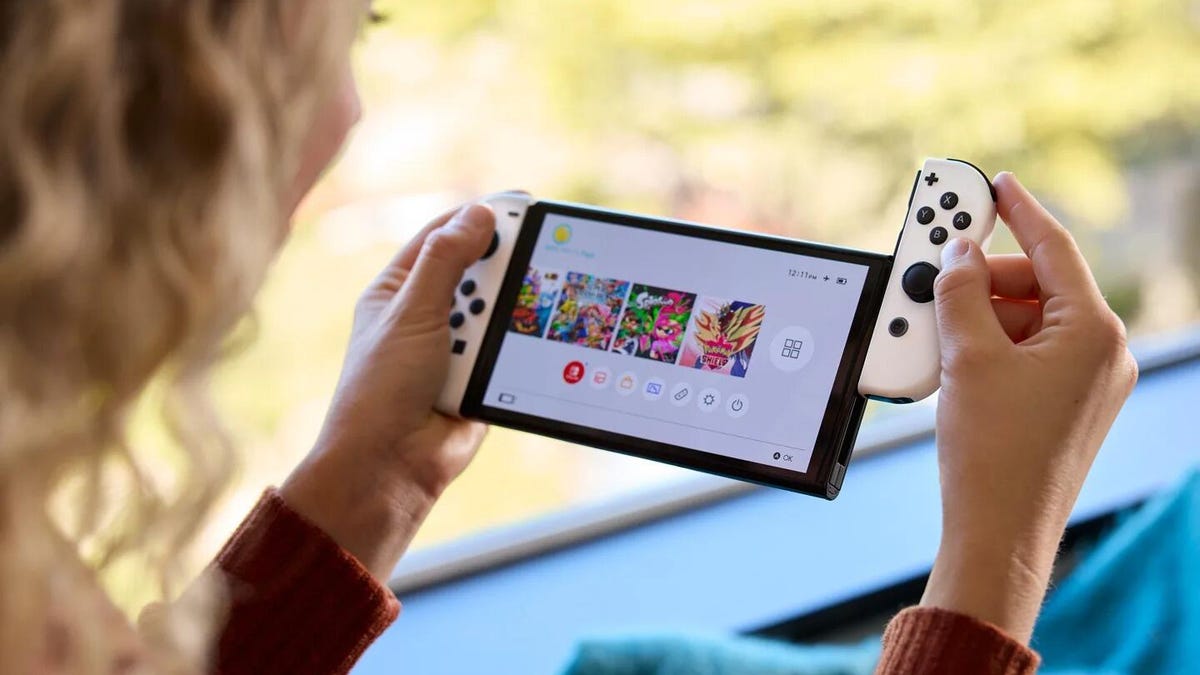Why Nintendo will probably never release a Switch Pro
Nintendo's history makes a Switch Pro seem unlikely.

Still holding out hope that the Nintendo Switch OLED was a precursor for an eventual Switch Pro reveal? It may be time to lower those expectations. In a statement this week designed to cool investor speculation, the company said it has "no plans for launching any other model at this time."
We also want to clarify that we just announced that Nintendo Switch(OLED Model) will launch in October, 2021, and have no plans for launching any other model at this time. (2/2)
— 任天堂株式会社(企業広報・IR) (@NintendoCoLtd) July 19, 2021
It's a splash of cold water, to be sure, particularly in light of Valve's newly announced Steam Deck, but we don't need Nintendo's statement to know that a more powerful Switch model isn't very likely. The truth is baked into the company's history: Despite years of fan expectations and industry pressure, Nintendo has never made a "pro" version of an existing console.
At least not if you define a pro console as fundamentally more powerful than the original.
In fact, Nintendo has come close to making a pro version of a console only three times: when it released the GameBoy Color, the Nintendo DSi and the New Nintendo 3DS . Though these handheld revisions were upgrades over their predecessors in terms of power, in practice they weren't all that different. The GameBoy Color had a decent library of exclusive full-color games , but it wasn't a vastly different experience than the original Nintendo handheld. While technically twice as powerful as the original DS, the DSi had only a handful of games that made use of that extra power, and it was mostly marked by a better screen, a thinner chassis, the novelty of a camera and the ability to download games directly to the system.
Before there was the New Nintendo 3DS, there was this.
And the New Nintendo 3DS? It loaded games a bit faster and offered a better stereoscopic 3D experience, sure, but the biggest upgrade its processor offered was the ability to play Super Nintendo games. Everything else that made it special was available in the 3DS Circle Pad Pro, a chunky accessory that gave the original 3DS a second thumbstick and extra shoulder buttons.
And that's much more typical of Nintendo's console design philosophy: minor upgrades and goofy add-on hardware. In fact, it's been a part of Nintendo's console design language from the beginning. The original NES, SNES, N64 and GameCube all had expansion ports, and most of them were used only in Japan. None of them gave the console true pro upgrades; most added a new media format for players to buy games in: magnetic disk drives, game downloads or the ability to play Game Boy Advance games on your TV.
Instead, Nintendo seems content to be a step behind its competitors, riding out the generation with outmoded features until it's time for a full upgrade. Just take the Nintendo Wii: Despite overwhelming demand for an HD upgrade, the "Wii HD" was never anything more than rumors and speculation. When it was finally time to upgrade, Nintendo didn't deliver a pro Wii, but a full, new console with a brand-new gimmick.
This doesn't make our desire for a more powerful Nintendo Switch unreasonable. Just unlikely. Nintendo has instead chosen a path similar to the one it's followed for its previous handhelds : small upgrades that aren't necessary for most but offer something new for folks who haven't already bought in and for diehards who want to spend a little more. Things like longer battery life, a better kickstand, an OLED screen.
Nintendo's statement that there are no new Switch models in the works "at this time" doesn't mean there won't be more revisions of the hybrid console in the future -- but if the company's history is anything to go by, it won't be the pro console we're looking for. Realistically, 4K TV play and better graphics will have to wait until whatever comes after the Switch. And knowing Nintendo, whatever that is will probably be something new, weird and unfamiliar.
And maybe that's OK. After all, if you're really looking for a more powerful handheld gaming device that can play the latest AAA games, there's always the Valve 's Switch Pro-like Steam Deck.

